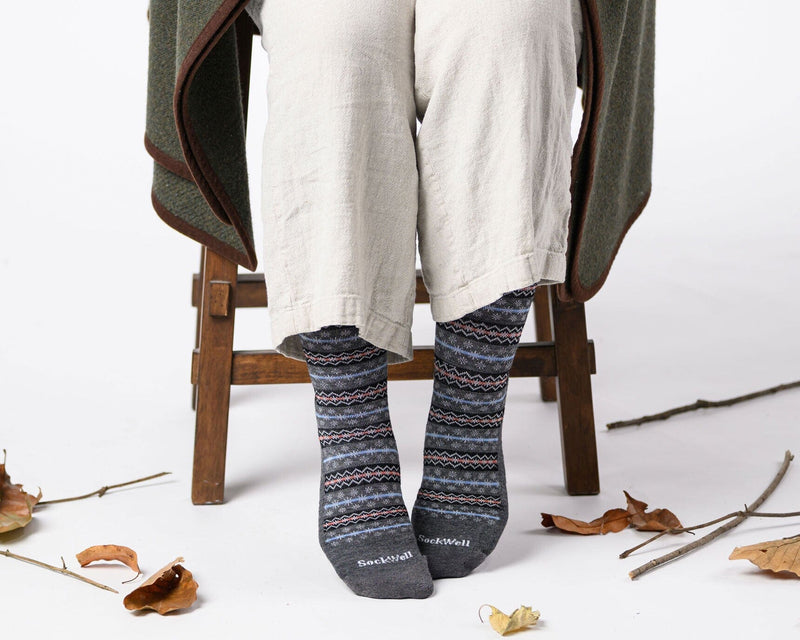
Living with lymphedema can feel like you’re carrying around a secret weight, but the right compression socks can make a world of difference. Whether you’re dealing with swelling, discomfort, or just looking for a bit of relief, finding the best compression socks is essential. But with so many options out there, where do you even start?
Key Takeaways
- Lymphedema involves the buildup of protein-rich fluid in tissues due to issues with the lymphatic system, leading to swelling. It can be either primary (genetic) or secondary (caused by surgery, cancer treatments, or infections).
- Compression socks promote blood circulation, reduce swelling and discomfort, and provide enhanced daily comfort, making them essential for managing lymphedema.
- Key factors in choosing the right compression socks include the material (nylon, spandex, merino wool blends), comfort, and the appropriate level of compression (usually 20-30 mmHg for lymphedema). Consult with a healthcare provider for personalized recommendations.
- Ensure proper fit by measuring your leg dimensions, wear them gradually to adapt to the pressure, and care for them by washing gently and rotating pairs to maintain elasticity.
- Always consult a healthcare professional before using compression socks, especially if you have underlying conditions like severe arterial disease or skin infections. Monitor for skin changes and unusual swelling, and seek medical advice if needed.
What You Need To Know About Lymphedema
What is Lymphedema?
Lymphedema is a chronic condition where protein-rich fluid builds up in your tissue, causing swelling in your arms, legs, or other parts of your body. It may be present at birth or develop later due to problems with your lymphatic system. It's kind of like a traffic jam, but inside your body.
Causes and Symptoms of Lymphedema
Lymphedema has two main types. Primary lymphedema occurs due to genetic mutations affecting your lymphatic system's development. You could be the lucky winner of this genetic lottery This can occur from birth or it might show up later in life because genes have their own quirky timelinese.
Secondary lymphedema, on the other hand, is an uninvited guest after events like surgery, cancer treatment, or infections. For instance, radiation therapy and lymph node removal during cancer treatment can lead to this swelling party. Surgery can sometimes nick your lymphatic vessels, causing fluid buildup. Also, let’s not forget those nasty infections, whether they’re bacterial, fungal, or parasitic—they can damage your lymphatic system and bring on lymphedema.
You might notice persistent swelling in your arms or legs, a heavy feeling in the affected limb, or repeated infections. Your skin might harden and thicken too. So, if your limbs start feeling like you're dragging a sack of potatoesheavy or fatigued easily, it might be lymphedema knocking on the door.
Benefits Of Compression Socks For Lymphedema
Living with lymphedema is no walk in the park. Thankfully, compression socks can significantly help manage this condition.
Improved Blood Circulation
Compression socks work wonders by promoting blood circulation. They apply graduated pressure, meaning it’s tightest at your ankle and gets looser as it goes up. This design encourages blood and lymphatic fluid to flow upward. No more uncomfortable fluid building up around your ankles or lower legs! Think of it as your personal cheerleader for your circulatory system.
Reduction in Swelling and Discomfort
Nothing says relief like reducing those unwelcome balloons we call swollen feet. Compression socks alleviate swelling by promoting circulation. This can make daily activities feel less like a chore and more like a breeze. You can enjoy a morning stroll or your favorite hobby without that nagging discomfort in your legs and feet.
Enhanced Comfort for Daily Wear
Wearing something all day? Comfort is key. Compression socks aren’t just functional; they’re comfortable and stylish. They come in various styles and materials, so you can find a pair that feels just right. Whether you prefer knee-highs, thigh-highs, or something sassy and sporty, there’s a comfy option for everyone. No need to trade style for comfort here!
These socks are true multitaskers in managing lymphedema. From providing comfort to promoting better circulation, it’s like having an all-in-one package for happier, healthier legs.
How To Choose The Best Compression Socks For Lymphedema
When picking out the best compression socks for lymphedema, you need to factor in a few key things. Comfort, materials, and the right level of compression can make all the difference.
Key Factors to Consider
You're not just buying socks here. You're investing in something that supports your health. So, what should you look for?
Material
You want socks that keep your feet dry, allow airflow, and are built to last. Think nylon, spandex, and Merino wool blends. Some even have antimicrobial properties to keep those pesky odors at bay.
- Recommended for Men: Sockwell Geo Compression Socks
- Recommended for Women: Sockwell Micro Grade Compression Socks
Comfort
Let's be honest. If they're not comfy, you're not wearing them. Look for a good fit, easy on and off, and just the right amount of snugness without pinching. Something you can wear daily without a second thought.
Level of Compression
Let's talk pressure. Compression levels are crucial. They're measured in millimeters of mercury (mmHg), which sounds fancy, but just remember: for lymphedema, moderate (15-20 mmHg) to firm compression (20-30 mmHg) is usually recommended. But hey, always check with your healthcare provider to get that thumbs-up.
- Moderate Graduated Compression Socks: Sockwell Men's Steep MediumShadow Box
- Firm Graduated Compression Socks: Sockwell Women's Hero
- Feeling overwhelmed? Don’t be. Think of it as finding a partner for your feet that promotes circulation, reduces swelling, and just plain makes life better.
How To Use Compression Socks
Compression socks provide incredible benefits for those dealing with lymphedema. Knowing how to use them properly ensures you enjoy all those rewards.
Proper Fitting and Sizing
Finding the right fit feels like a game-changer. Your compression socks must hug your legs just right, not too tight, not too loose.
- Measurement Matters: Measure the circumference of your ankle, calf, and thigh in the morning when swelling is minimal.
- Right Length: Choose between knee-high or thigh-high socks based on where you need the most support.
- Comfort First: If your socks pinch or leave deep marks on your skin, try a different size, as comfort promotes wearing them longer.
Tips on Wearing and Caring
Wearing and caring for your compression socks can be straightforward and even enjoyable with a few simple tips.
- Putting Them On: Slide your hand inside the sock to the heel, turn it inside out, position it over your foot, and roll up the leg. Easy peasy!
- Gradual Use: Start wearing them for a few hours each day, gradually increasing the time as your legs get used to the pressure.
- Daily Routine: Aim to wear them during the day, especially when standing or sitting for long periods. Your legs need the most love then!
To help your socks last longer:
- Wash Gently: Hand-wash or use a delicate cycle in cold water, then air dry to keep the material in top shape.
- Rotate Pairs: Keep a few pairs handy and rotate them. This gives each pair time to recover its elasticity.
- Check for Wear: Look out for thinning fabric or stretched-out areas. They need replacing if they’re no longer tight.
By following these steps, your compression socks will continue to promote circulation and alleviate swelling, helping you manage lymphedema more effectively.
Potential Side Effects and Precautions
Compression socks for lymphedema are generally safe, but it's important to be aware of potential side effects and take necessary precautions. Your comfort and safety come first.
When to Consult a Doctor
It's always best to consult your healthcare provider before starting any new treatment, including compression socks. Compression levels vary, and the wrong choice can do more harm than good.
- If you notice skin changes like redness or irritation, talk to your doctor.
- Any unusual swelling or pain deserves immediate attention.
- For those with circulatory issues or diabetes, professional guidance is crucial.
Who Should Avoid Compression Socks
Compression socks aren't for everyone. Some people should steer clear altogether.
- Severe arterial disease patients might face complications.
- Those with skin infections could worsen their condition.
- If you're unsure, always check with your healthcare professional first.
Using compression socks promotes better circulation and helps manage lymphedema symptoms. Listen to your body and seek advice when needed.
In A Nutshell
With the right compression socks, you can make a significant difference in managing lymphedema symptoms. By understanding the unique benefits of graduated compression socks and ensuring proper fit and care, you can improve circulation and reduce discomfort. Always consult with a healthcare professional to tailor your approach to your specific needs and conditions. With the right guidance and tools, you can effectively manage lymphedema and enhance your quality of life.
Take control of your lymphedema with Sockwell's graduated compression socks. Crafted from Merino wool, these durable socks provide breathability and dryness for all-day comfort. By enhancing blood flow and reducing swelling, you can manage your lymphedema effectively. Ready to step into comfort? Grab your pair today!



